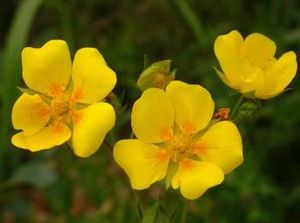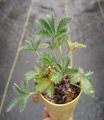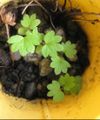Potentilla gracilis var. gracilis
- Scientific Name: Potentilla gracilis var. gracilis
- Family: Rosaceae
- Common names: slender cinquefoil, graceful cinquefoil
- Synonyms/Misapplications: Potentilla gracilis vars. fastigiata, glabrata, permollis, Potentilla fastigiata, P. glomerata, P. macropetala, P. longipedunculata
- Codon: POTGRA
Contents
Taxonomy
| Scientific classification | |
|---|---|
| Kingdom: | Plantae |
| Subkingdom: | Viridiplantae |
| Phylum: | Tracheophyta |
| Subphylum: | Spermatophytina |
| Class: | Magnoliopsida |
| Subclass: | Rosanae |
| Order: | Rosales |
| Family: | Rosaceae |
| Genus: | Potentilla L. |
| Species: | Potentilla gracilis Douglas ex Hook. |
| Subspecies: | Potentilla gracilis var. gracilis Douglas ex Hook. |
| Synonyms | |
| |
Description
Highly variable native perennial from rising from a branched crown, erect to slightly spreading stems, 4-8 dm tall. 5 varieties are intergrading.
Basal leaves are numerous, the leaves are white woolly on the underside, bear large stipules, comprised of 5-9 leaflets, oblong-eliptic, margins deeply toothed.
Inflorescence large, many-flowered, open, somewhat flat-topped; calyx 6-10 mm. broad, the 5 lobes 4-10 mm. long, ovate-lanceolate, the alternating bracteoles narrowly lanceolate, nearly as long; petals 5, yellow, obcordate, longer than the sepals; stamens 20; pistils numerous, the style slender, sub-terminal on the achene and the same length.
Fruit is an achene 1.5-2 mm. long, smooth, greenish.[2][3]
Bloom Period
July - August.[3]
Distribution
Alaska south, on both sides of Cascades, to California, east to Quebec, Montana, Colorado and Arizona.[4]
Habitat
Damp to seasonally damp meadows, flatlands, sagebrush steppes, open forest.[4]
Uses
Wildlife: Medium palatability for browsing and grazing animals.
First Nations: Sx̌ʷyʔiɬpx use, infusion of pounded root as a blood tonic, antidiarrheal, and general tonic for aches and wash for sores. Nlaka'pamux use as root and leaf poultice, mixed with subalpine fir pitch, used as a drawing medicine on wounds.[5]
Propagation
Photo Gallery
References
- ↑ Integrated Taxonomic Information System. Retrieved from https://www.itis.gov/servlet/SingleRpt/SingleRpt?search_topic=TSN&search_value=24715#null
- ↑ Klinkenberg, Brian. (Editor) 2020. E-Flora BC: Electronic Atlas of the Plants of British Columbia [eflora.bc.ca]. Lab for Advanced Spatial Analysis, Department of Geography, University of British Columbia, Vancouver. [Accessed:2020-05-09]
- ↑ 3.0 3.1 Bowcutt, F., & Hamman, Sarah. (2016). Vascular plants of the South Sound prairies (First ed.). Olympia, Washington: The Evergreen State College Press.
- ↑ 4.0 4.1 MacKinnon, A., Pojar, Jim, & Alaback, Paul B. (2004). Plants of the Pacific Northwest coast : Washington, Oregon, British Columbia & Alaska (Rev. ed.). Vancouver: Lone Pine Pub.
- ↑ Native American Ethnobotany Database. Retrieved from http://naeb.brit.org/uses/search/?string=potentilla+gracilis






